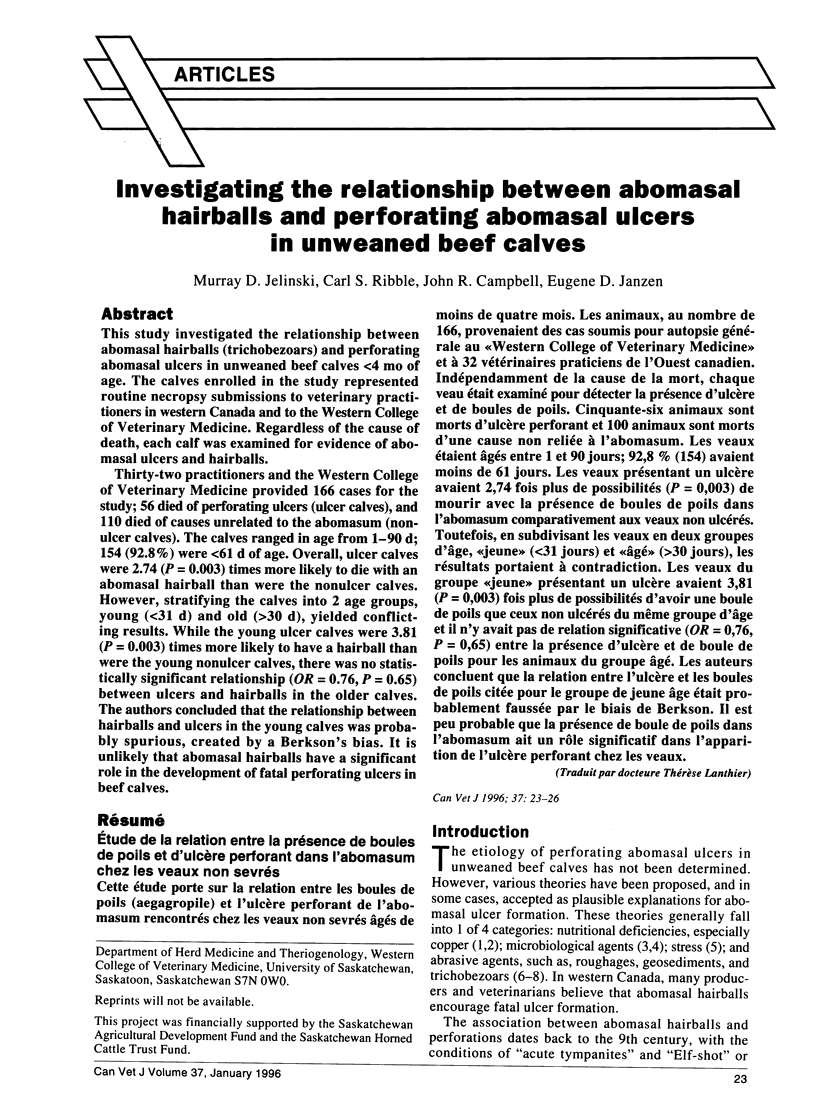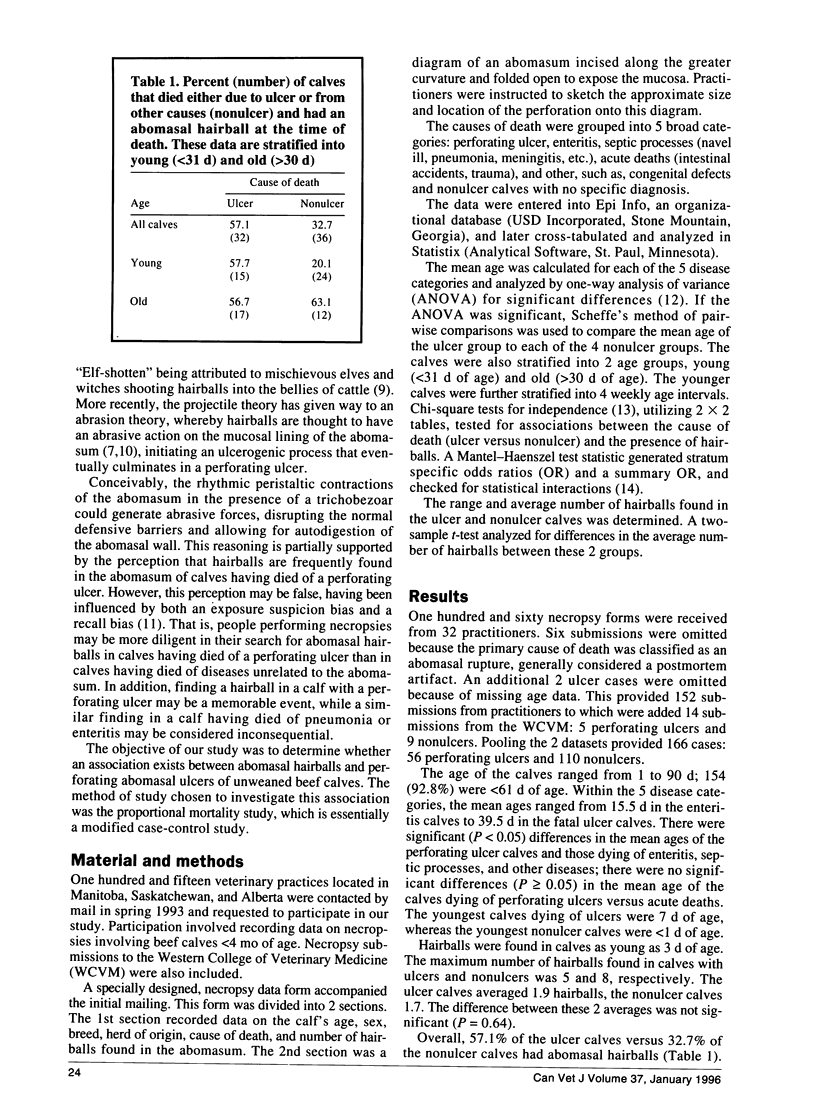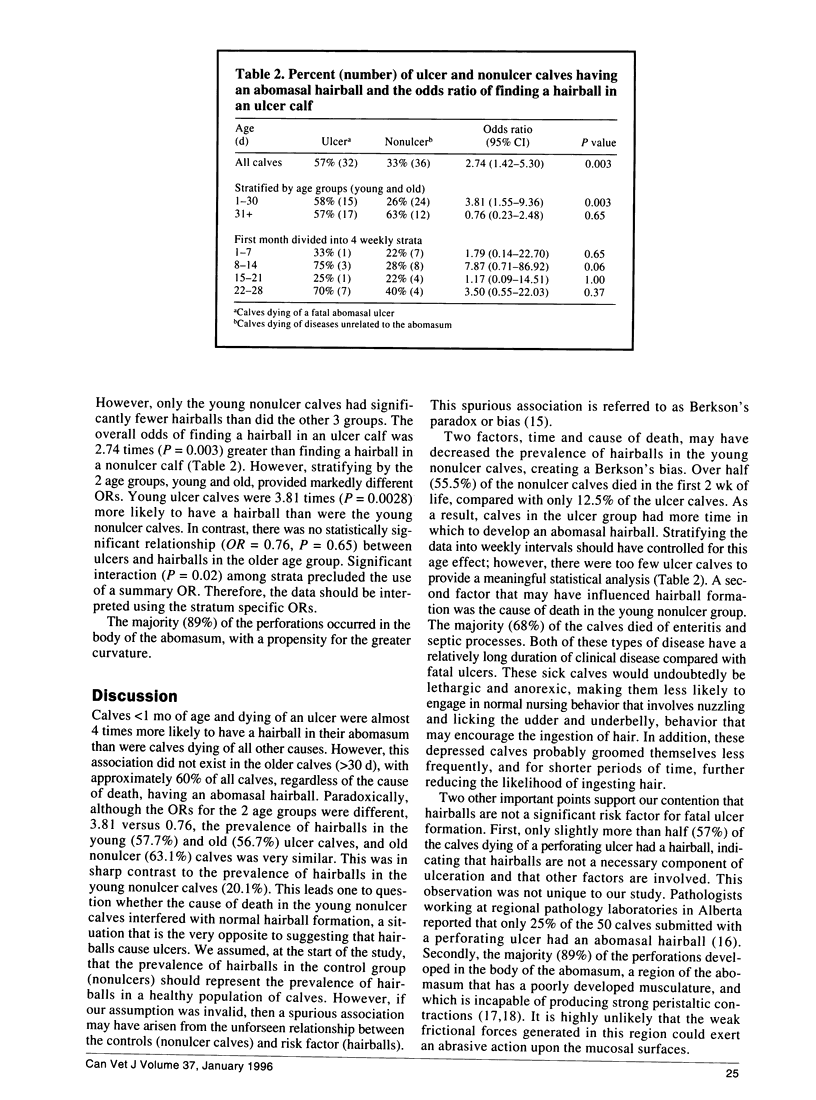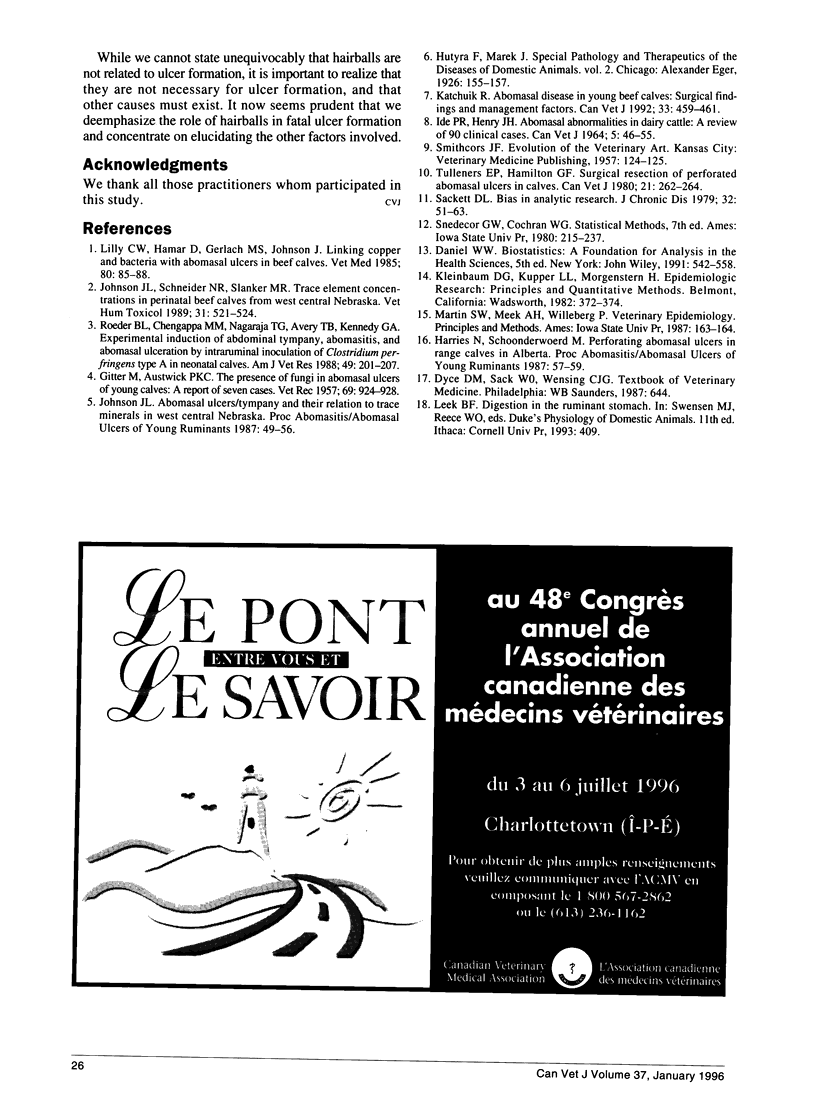Abstract
This study investigated the relationship between abomasal hairballs (trichobezoars) and perforating abomasal ulcers in unweaned beef calves <4 mo of age. The calves enrolled in the study represented routine necropsy submissions to veterinary practitioners in western Canada and to the Western College of Veterinary Medicine. Regardless of the cause of death, each calf was examined for evidence of abomasal ulcers and hairballs. Thirty-two practitioners and the Western College of Veterinary Medicine provided 166 cases for the study; 56 died of perforating ulcers (ulcer calves), and 110 died of causes unrelated to abomasum (non-ulcer calves). The calves ranged in age from 1-90 d; 154 (92.8%) were <61 d of age. Overall, ulcer calves were 2.74 (P = 0.003) times more likely to die with an abomasal hairball than were the nonulcer calves. However, stratifying the calves into 2 age groups, young (<31 d) and old (>30 d), yielded conflicting results. While the young ulcer calves were 3.81 (P = 0.003) times more likely to have a hairball than were the young nonulcer calves, there was no statistically significant relationship (OR = 0.76, P = 0.65) between ulcer and hairballs in the older calves. The authors concluded that the relationship between hairballs and ulcers in the young calves was probably spurious, created by a Berkson's bias. It is unlikely that abomasal hairballs have a significant role in the development of fatal perforating ulcers in beef calves.
Full text
PDF



Selected References
These references are in PubMed. This may not be the complete list of references from this article.
- Ide P. R., Henry J. H. Abomasal Abnormalities in Dairy Cattle: A Review of 90 Clinical Cases. Can Vet J. 1964 Mar;5(3):46–55. [PMC free article] [PubMed] [Google Scholar]
- Johnson J. L., Schneider N. R., Carlson M. P., Slanker M. R. Trace element concentrations in perinatal beef calves from west central Nebraska. Vet Hum Toxicol. 1989 Dec;31(6):521–524. [PubMed] [Google Scholar]
- Katchuik R. Abomasal disease in young beef calves: Surgical findings and management factors. Can Vet J. 1992 Jul;33(7):459–461. [PMC free article] [PubMed] [Google Scholar]
- Roeder B. L., Chengappa M. M., Nagaraja T. G., Avery T. B., Kennedy G. A. Experimental induction of abdominal tympany, abomasitis, and abomasal ulceration by intraruminal inoculation of Clostridium perfringens type A in neonatal calves. Am J Vet Res. 1988 Feb;49(2):201–207. [PubMed] [Google Scholar]
- Sackett D. L. Bias in analytic research. J Chronic Dis. 1979;32(1-2):51–63. doi: 10.1016/0021-9681(79)90012-2. [DOI] [PubMed] [Google Scholar]
- Tulleners E. P., Hamilton G. F. Surgical resection of perforated abomasal ulcers in calves. Can Vet J. 1980 Sep;21(9):262–264. [PMC free article] [PubMed] [Google Scholar]


